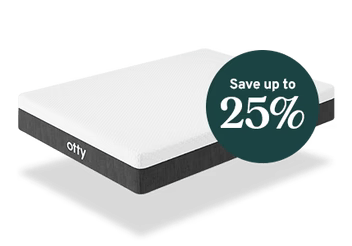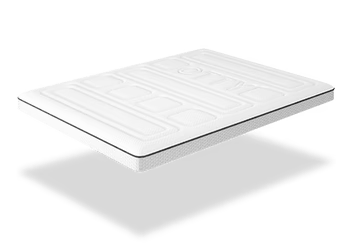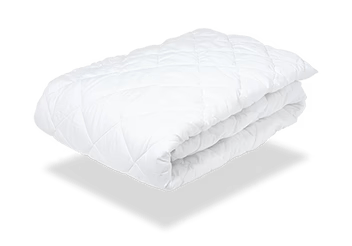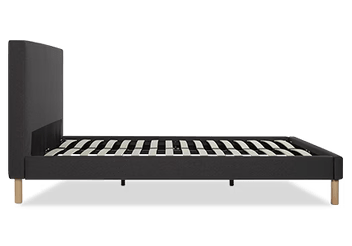Waking up with aches, tossing and turning all night, or feeling like you're sleeping on concrete? You're not alone. Before you spend on a new mattress, there are proven ways to transform your current one into the comfortable sleep surface you deserve.
Whether your mattress is too firm, too soft, sagging, or simply showing its age, this guide provides practical solutions that actually work. We'll walk you through the exact steps to diagnose your comfort issues and fix them, so you can start sleeping better tonight.
Is Your Mattress Actually Uncomfortable?
Before investing in solutions, it's important to identify what's making your mattress uncomfortable. Here are the most common issues:
Your mattress is too firm - You wake with pressure points on your hips, shoulders, or knees. You toss and turn trying to find a comfortable position.
Your mattress is too soft - You feel like you're sinking in. You wake with lower back pain because your spine isn't properly aligned.
Your mattress is sagging - You roll toward the middle of the bed. There are visible indentations where you sleep.
Your mattress sleeps hot - You wake up sweaty or need to flip your pillow to the cool side multiple times per night.
Your mattress is old - Mattresses typically last 7-10 years. If yours is older, it may have lost its support properties even if it looks fine.
How You Can Make Your Mattress More Comfortable
In this section, we look at the various methods to make your mattress more comfortable. From the use of a mattress topper to the benefits of a mattress protector, and even the impact of the right bed base, we will explore how they can transform help you sleep better.
Free Fixes to Try First
Before purchasing anything, try these no-cost solutions:
Rotate your mattress - Flip it 180 degrees so your head is where your feet were. This redistributes wear and can eliminate soft spots. Do this every 3-6 months.
Check your bed frame - Make sure all slats are in place and no more than 3 inches apart. Missing or broken slats cause uneven support and sagging.
Adjust your room temperature - Memory foam mattresses feel firmer in cold rooms. Keep your bedroom between 16-19°C for optimal mattress performance.
Let new mattresses off-gas - New mattresses can feel firmer for the first 30-90 days. Give yours time to break in before making changes.
Remove the plastic - If you've left the plastic wrapping on your mattress, remove it immediately. This traps heat and prevents the mattress from breathing properly.
Use a Mattress Topper (The #1 Most Effective Solution)
A mattress topper is the single most effective way to change how your mattress feels without replacing it. This cushioning layer sits directly on top of your mattress and can add softness, support, or cooling, depending on what you choose.
Choosing the Right Topper Type:
Memory Foam Toppers - Best for: Mattresses that are too firm, pressure point pain
- Conforms to your body shape and relieves pressure on hips and shoulders
- Choose 2-3 inches thick for moderate softening, 4 inches for significant change
- Look for gel-infused or open-cell memory foam if you sleep hot
Latex Toppers - Best for: Adding bounce and responsiveness, hot sleepers
- More breathable than memory foam, sleeping cooler
- Provides cushioning without the "sinking in" feeling
- Naturally hypoallergenic and resistant to dust mites
- Choose 2 inches for slight softening, 3 inches for moderate change
Feather/Down Toppers - Best for: Luxurious plush feel, cold sleepers
- Creates a cloud-like sleeping surface
- Excellent for very firm mattresses
- Requires regular fluffing to maintain loft
- Not suitable for allergy sufferers
Wool Toppers - Best for: Temperature regulation, natural materials
- Naturally wicks moisture and regulates temperature
- Adds gentle cushioning without dramatic softness
- Durable and naturally flame-resistant
Cooling Gel Toppers - Best for: Hot sleepers, night sweats
- Actively dissipate heat away from your body
- Often combine gel with memory foam or latex
- More expensive but worth it if heat is your primary issue
How Thick Should Your Topper Be?
- 1-2 inches: Subtle comfort adjustment, minimal change to mattress feel
- 2-3 inches: Noticeable softening, good for moderately firm mattresses
- 3-4 inches: Dramatic transformation, can make a very firm mattress feel medium-soft
- 4+ inches: Maximum softening, but may affect mattress edge support
Pro tip: If your mattress is sagging, a topper won't fix the underlying problem—it will just conform to the sag. Focus on support solutions first.
Our bamboo charcoal mattress topper offers excellent pressure relief and temperature regulation, making it an ideal choice for most sleepers.
Add A Mattress Protector
A mattress protector is a fantastic addition to your bed setup. It's a thin extra layer that sits on top of your mattress, providing an extra level of comfort and protection. The benefits of a mattress protector are numerous, and they can significantly enhance your sleeping experience.
Firstly, it can add a plush layer to a firm mattress, making it feel softer and more comfortable. This is particularly beneficial if you find your current mattress too hard or if you're experiencing discomfort during sleep.
Secondly, a mattress pad can protect your mattress from wear and tear, extending its lifespan. It acts as a barrier against spills, stains, and other potential damage. This is especially useful if you have a new mattress that you want to keep in pristine condition.
Thirdly, some mattress protectors come with special features such as cooling technology or memory foam. These can help regulate your body temperature during sleep and provide additional support, respectively.
Lastly, they are easy to clean and maintain. Most are machine washable, making them a practical choice for those who value cleanliness and hygiene.
Choose the Right Bed Frame or Box Spring
Choosing the right kind of foundation can significantly enhance the comfort of your mattress. The bed frame serves as the foundation for your mattress, providing the necessary support and stability. A sturdy and well-constructed frame can extend the lifespan of your mattress, while a box spring can add a layer of cushioning and bounce.
If you're using a foam mattress, a platform bed is an excellent choice. It offers a solid surface that can support the weight of the mattress and evenly distribute it, preventing sagging and enhancing the comfort level.
On the other hand, if you have an innerspring or hybrid mattress, a box spring can supplement the bounce and provide additional support.
The choice of bed frame or box spring should also align with your personal comfort preferences and sleeping habits. For instance, if you prefer a firmer sleeping surface, a platform bed frame might be more suitable.
Conversely, if you enjoy a bit of bounce in your bed, a box spring could be the better option.
Solutions for Specific Problems
If Your Mattress Is Too Soft or Sagging:
Firstly, check out our blog on how to fix a sagging mattress for more detail.
Plywood board solution - Place a ¾-inch plywood board (cut to mattress size) between your mattress and bed frame. This prevents the mattress from sagging between slats and provides uniform support. Cost: £20-40.
Firmer mattress topper - A 2-inch latex topper can add responsiveness and prevent the "sinking" feeling. Unlike soft toppers, firm toppers provide a supportive layer.
Check slat spacing - Slats should be no more than 3 inches apart. Add additional slats if needed to prevent sagging. Bunkie boards (£40-70) are a quick fix that sits on top of existing slats.
If Your Mattress Is Too Firm:
Firstly, check out our blog on how to make a firm mattress softer.
Memory foam topper - A 3-4 inch memory foam topper is the most effective solution, providing pressure relief at key points like hips and shoulders.
Mattress pad with fiberfill - A quilted mattress pad adds a plush layer without the dramatic change of a topper. Good for slight firmness issues.
If Your Mattress Sleeps Hot:
Firstly, check out our blog on how to make your mattress cooler
Cooling mattress protector - Look for protectors with cooling technology like PCM (phase change materials) or moisture-wicking fabrics.
Breathable sheets - Switch to cotton percale (not sateen), linen, or bamboo sheets with moisture-wicking properties.
Remove mattress protector layers - If you're using a waterproof protector, this may be trapping heat. Switch to a breathable, non-waterproof option unless protection is essential.
Cooling topper - Gel-infused memory foam or latex toppers sleep significantly cooler than traditional memory foam.
If Your Mattress Is Old But Not Ready to Replace:
First of all, check out our blog on how often to change your mattress for more detail.
Full encasement protector - Protects against allergens, dust mites, and further deterioration while you save for a replacement.
Strategic topper use - A quality 3-inch topper can extend the life of an older mattress by 1-2 years, but this is a temporary solution.
Rotate regularly - Even old mattresses benefit from rotation to distribute wear evenly.
Budget Guide: Which Solutions Give You the Most Comfort Per Pound?
Under £50:
- Mattress protector/pad: £20-40 (subtle improvement)
- Rotating your mattress: Free (moderate improvement for uneven wear)
- Better pillows: £30-50 (significant improvement for £)
£50-150:
- Quality mattress topper: £60-120 (dramatic improvement, best value)
- Upgraded sheet set: £50-100 (moderate improvement in comfort)
- Plywood board for sagging: £20-40 + topper £60-100 (significant improvement)
£150-300:
- New bed frame with proper support: £150-250 (significant improvement if current frame is poor)
- Premium cooling topper: £150-250 (dramatic improvement for hot sleepers)
£300+:
- Consider saving for a new mattress instead
Best value overall: A quality 3-inch memory foam or latex topper (£60-120) provides the most dramatic comfort improvement for the cost.
Final Thoughts on Making Your Bed & Mattress More Comfortable
Your Action Plan for a More Comfortable Mattress
Start here:
- Diagnose your issue - Is your mattress too firm, too soft, sagging, or sleeping hot?
- Try free fixes first - Rotate your mattress, check your bed frame, adjust room temperature
- Invest strategically - A quality mattress topper provides the best comfort improvement for your money
If you're still uncomfortable after trying these solutions, it may be time for a new mattress. Most mattresses last 7-10 years, and no amount of toppers or accessories can fix a mattress that's past its prime.
Quick decision guide:
- Mattress too firm → 3-inch memory foam topper
- Mattress too soft → Plywood support board + firm latex topper
- Sleeping hot → Cooling gel topper + breathable sheets
- General discomfort → Start with mattress protector and quality pillow
The right combination of these solutions can transform your sleep quality without the cost of a new mattress. Start with one or two changes and adjust from there—you'll be sleeping more comfortably in no time.











